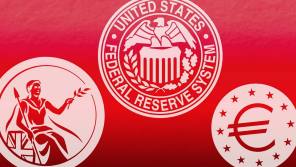

Many observers predicted 2017 would be a year of pain for the continent’s stockmarkets, but it has not turned out that way. The political risks that tripped off the tongue in January – Dutch, French and German elections – have been and gone with little to worry investors.
At the same time, the eurozone’s sclerotic economy has begun to stage a long-awaited recovery.
July 2017 marked five years since European Central Bank (ECB) president Mario Draghi’s infamous pledge to do “whatever it takes” to save the euro. A month later brought news that eurozone GDP growth had risen to 0.6 per cent in the second quarter – ahead of both the US and the UK. The currency bloc’s unemployment rate is also falling faster than economists had expected.
Solid returns
True to form, markets had already begun factoring in this improvement. As of May, the EuroStoxx 50 index was up almost 10.5 per cent year to date as investors returned in their droves after several years of caution. The benchmark remained 9.5 per cent higher as of the end of September.
Table 1 shows those funds that have performed best over the past five years. Topping the pile is Man GLG Continental European Growth, run by former Invesco manager Rory Powe. A caveat is that Mr Powe has only run the strategy for the past three years: the vehicle is second only to Marlborough European Multi-Cap over this time period.
Both portfolios have a preference for spreading investments across small and mid, as well as large-cap stocks. The style is particularly evident in the case of the Marlborough fund, which has half of its portfolio in companies with a market capitalisation of less than £1bn.
One difference between the two vehicles is the weightings given to individual stocks. Both list Ryanair among their largest positions, for example, but the airline accounts for 1.5 per cent of the Marlborough fund compared with 7 per cent of the Man GLG portfolio. The company’s recent capacity struggles have hurt its share price and have contributed to the latter fund’s less distinguished one-year returns.
The other top-three offering is the Henderson European Focus trust, run by John Bennett. The manager lagged peers in 2015-16, but has outstripped all comers over the past 12 months with a one-year return on £1,000 of £1,360. Mr Bennett has put his faith in the financials that are benefitting from the region’s recovery – the sector accounts for more than 25 per cent of his trust – alongside his longstanding preference for pharmaceuticals.
As would be expected during a period of solid returns, the typical investment trust has beaten the average open-ended fund. But trusts’ ability to gear up portfolios does not always mean they do so: in 2015-16, for example, the sector trailed open-ended peers by more than 7 percentage points.
Market moves
At first glance, the table appears to show the market rally has been under way for two years, not one. But much of the gains made in 2015-16 were attributable to sterling’s slump against the euro during that period as a result of the Brexit vote.
The pound fell by about 15 per cent over the period – accounting for an equivalent percentage point increase in the value of holdings denominated in euros.
This year the gains have had more to do with improving fundamentals. But it is fair to say investors have again received an additional bonus as a result of the euro’s 2017 surge against the pound.
The typical Europe ex UK equity fund had risen 15 per cent in 2017 as of the end of the third quarter, with around a third of this due to the shifting exchange rate.
It is the strength of the euro that may now be the biggest risk to the continent’s recovery. European earnings forecasts enjoyed eight consecutive monthly upgrades in the lead up to July, when they were curtailed by the currency’s continued rise.
The euro has risen in part on hopes that an Emmanuel Macron-Angela Merkel partnership at the heart of Europe will be business and economy-friendly. But those businesses must now deal with increased costs as a result.
There is also the idea that too much good news may prove problematic: the stronger the economy becomes, the more likely the ECB is to announce a ‘tapering’ of its quantitative easing (QE) programme. Some fret that this could derail equity markets, in a repeat of the 2013 ‘taper tantrum’ in the US.
The counterargument is that other announcements of a reining in of QE – such as that made in the US last month – have not troubled equities. What’s more, a stronger euro may make the ECB less likely to act for now.
What of politics? This year’s national elections may have had little impact on stockmarkets, but another surprise was sprung at the end of September in the form of the independence referendum in the Spanish region of Catalonia. Spain’s attempts to quash the protest vote – which it declared illegal – further inflamed the situation.
Spanish equities stuttered as a result, and while tensions appeared to be subsiding at the time of writing, the episode did suggest that political risk can still rattle markets. But with corporate earnings improving across the continent, long-term investors may believe they can settle in and enjoy the ride for a good while yet.



